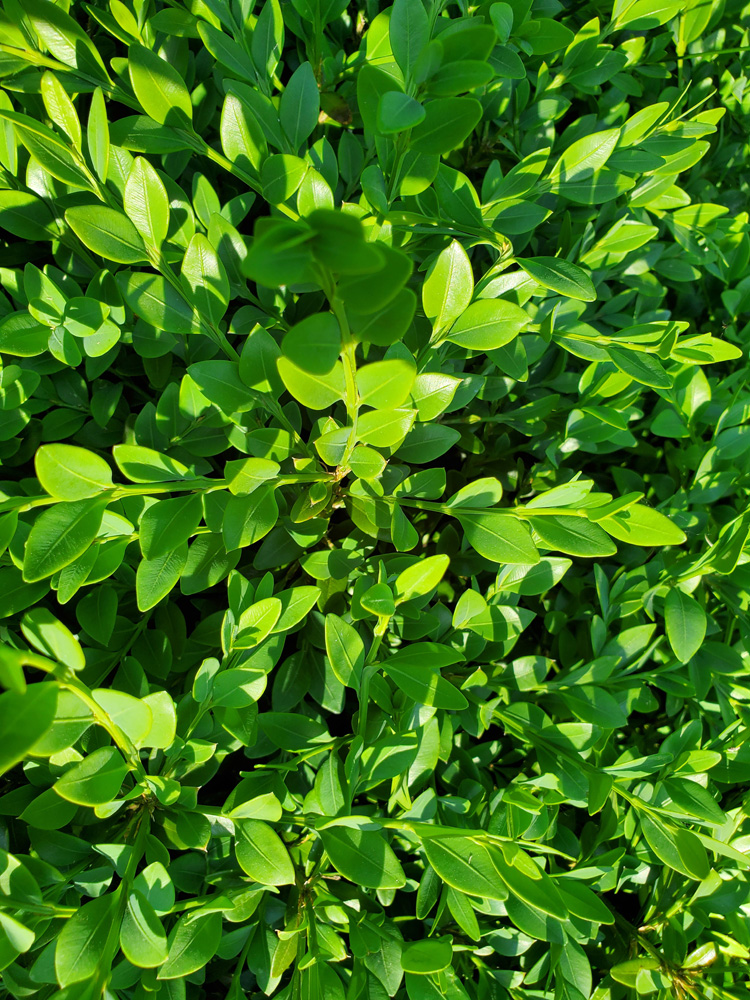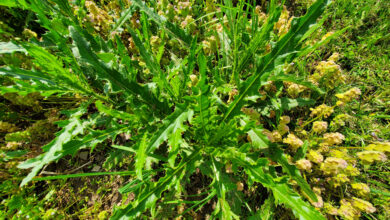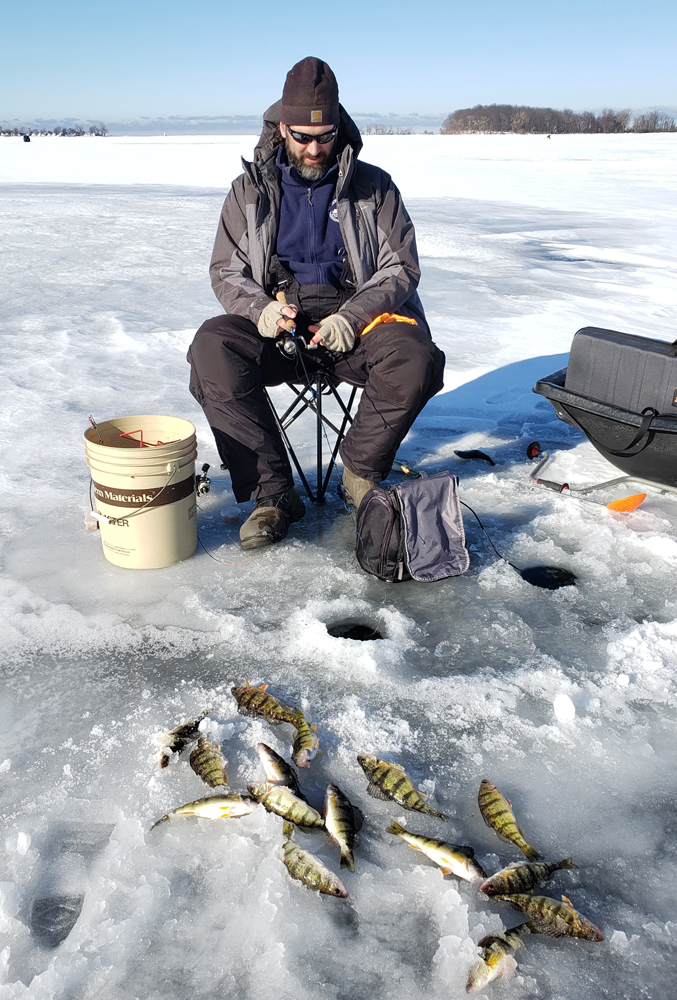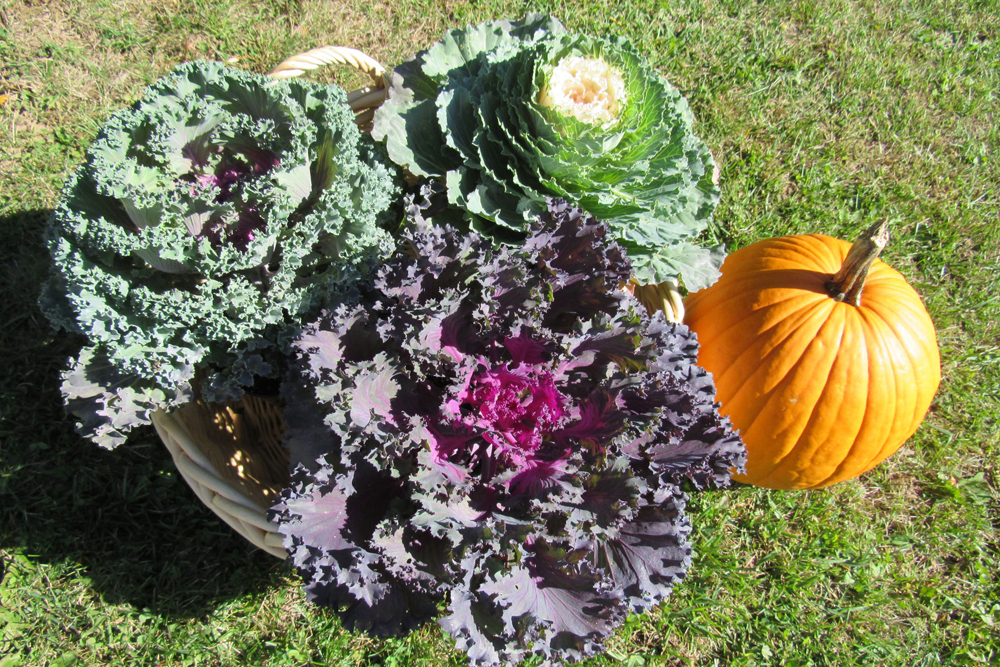Box Tree Moth
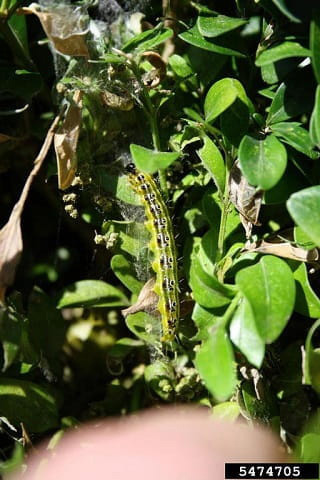
An invasive insect pest is making things difficult for gardeners who grow boxwood. The Box Tree Moth (BTM) is native to North China and Korea and is a threat to plantings of boxwood in your landscape. A fact sheet released by New York State Integrated Pest Management at Cornell University, says that box tree moth first made an appearance in New York State in 2021, likely due to being carried in a storm from infestations in Ontario, Canada. This is probably why counties along the southern shore of Lake Ontario are currently being impacted. NYS Integrated Pest Management says there is a federal quarantine on exports of boxwood nursery stock from countries with known infestations.
If you have noticed webbing on your boxwoods, you may have an infestation. Check the interior of the shrub by spreading branches apart, and look for the presence of caterpillars. Leaves where caterpillars are feeding will have a “peeled” look, or only have the midrib of the leaf remaining. You may also notice caterpillar droppings which are green-black in color. If your boxwoods have a brown or scorched look, it is likely you have a severe infestation.
The box tree moth prefers eating boxwoods, and Cornell notes that because there are no native species in North America, we don’t have many boxwood plants in the wild. This limits the spread of the moth in general, but your home plantings are still at risk.
Caterpillars are black and green and have green, yellow, black, and white stripes. The adult moths are usually white with a brown margin around the wings, although a less common variety is fully brown with small spots of white on the forewing. The wingspan is about 1.5 inches, Cornell explains.
Be sure to monitor your shrubs for caterpillars, as well signs of cut or missing leaves and white webbing. This can be a difficult insect to control, and if the infestation is severe, you may not be able to save your plant.
Integrated Pest Management advises that hand picking caterpillars with small infestations can be effective. This is an important reason to monitor your plants. More serious infestations may need treatment with an approved insecticide – contact your county Cornell Cooperative Extension office for specific products. Cornell notes that when treating, you must thoroughly cover the interior of the shrub and a professional applicator may be needed for the job. I know gardeners who thoroughly treated shrubs last year, only to have the pest return this year.
The NYS Dept. of Ag and Markets advises gardeners in our area to double-bag branches or entire shrubs that are infected and dispose of them in your trash. If you are replacing infested shrubs, choose a species other than boxwood.
